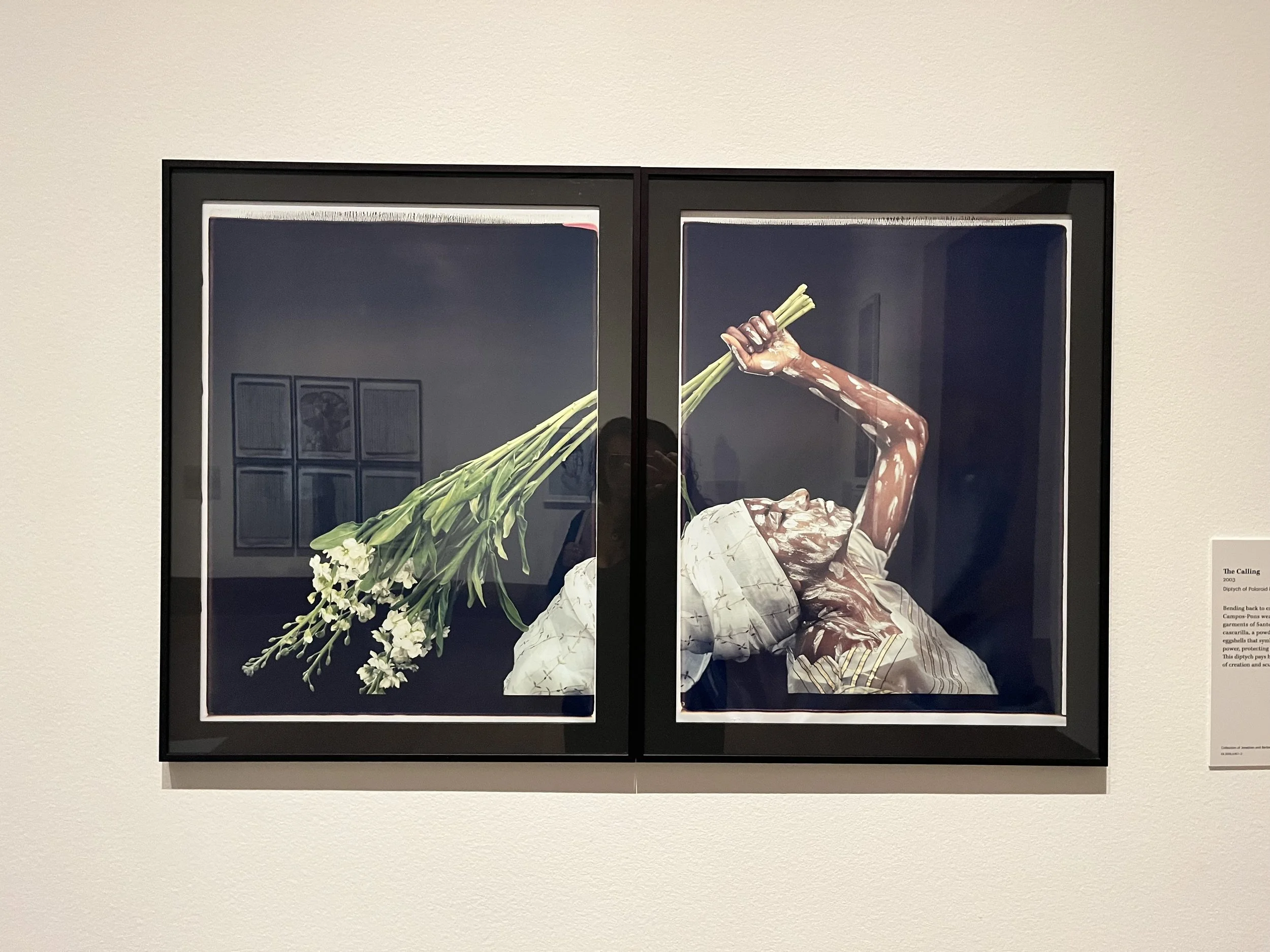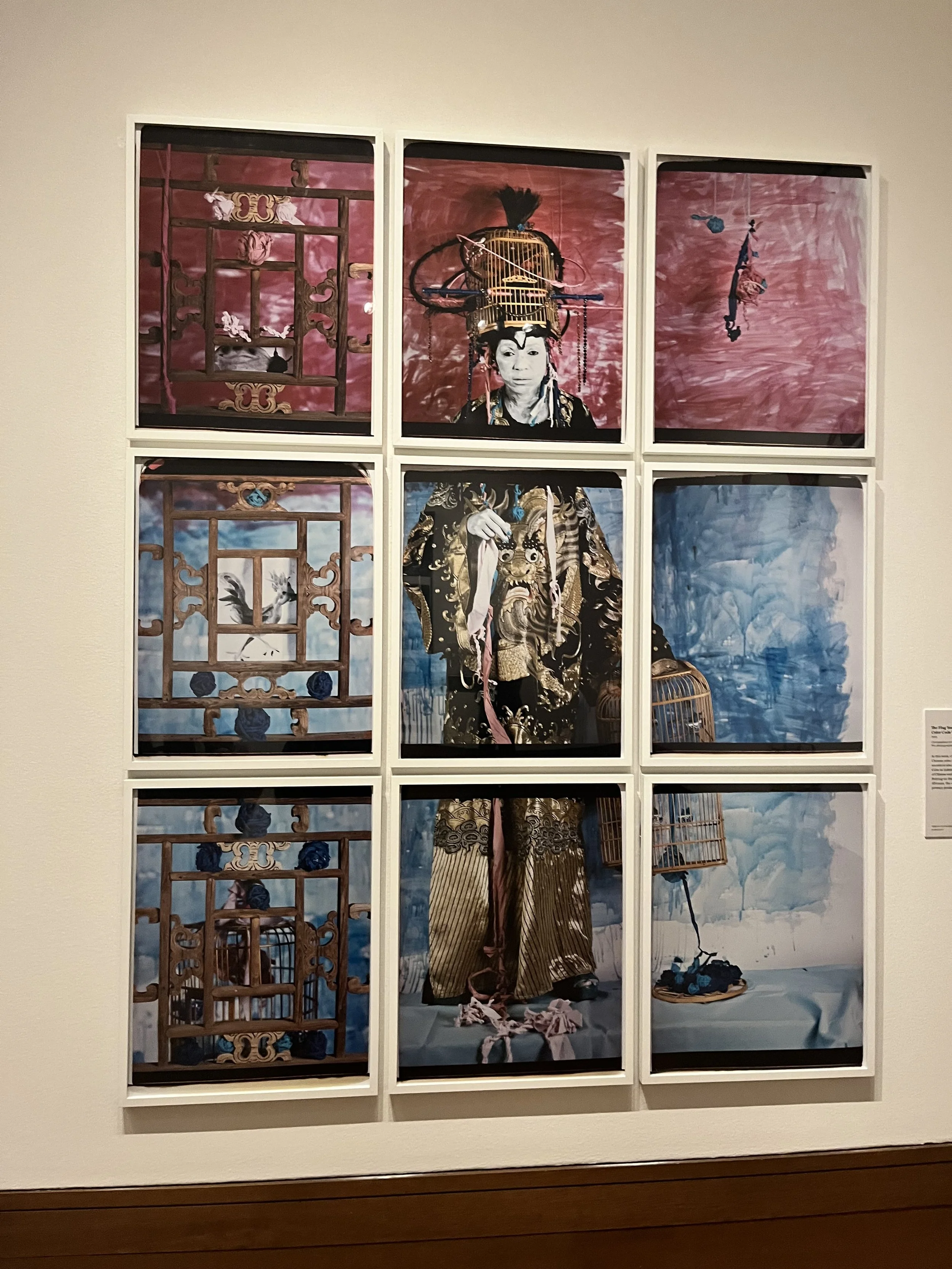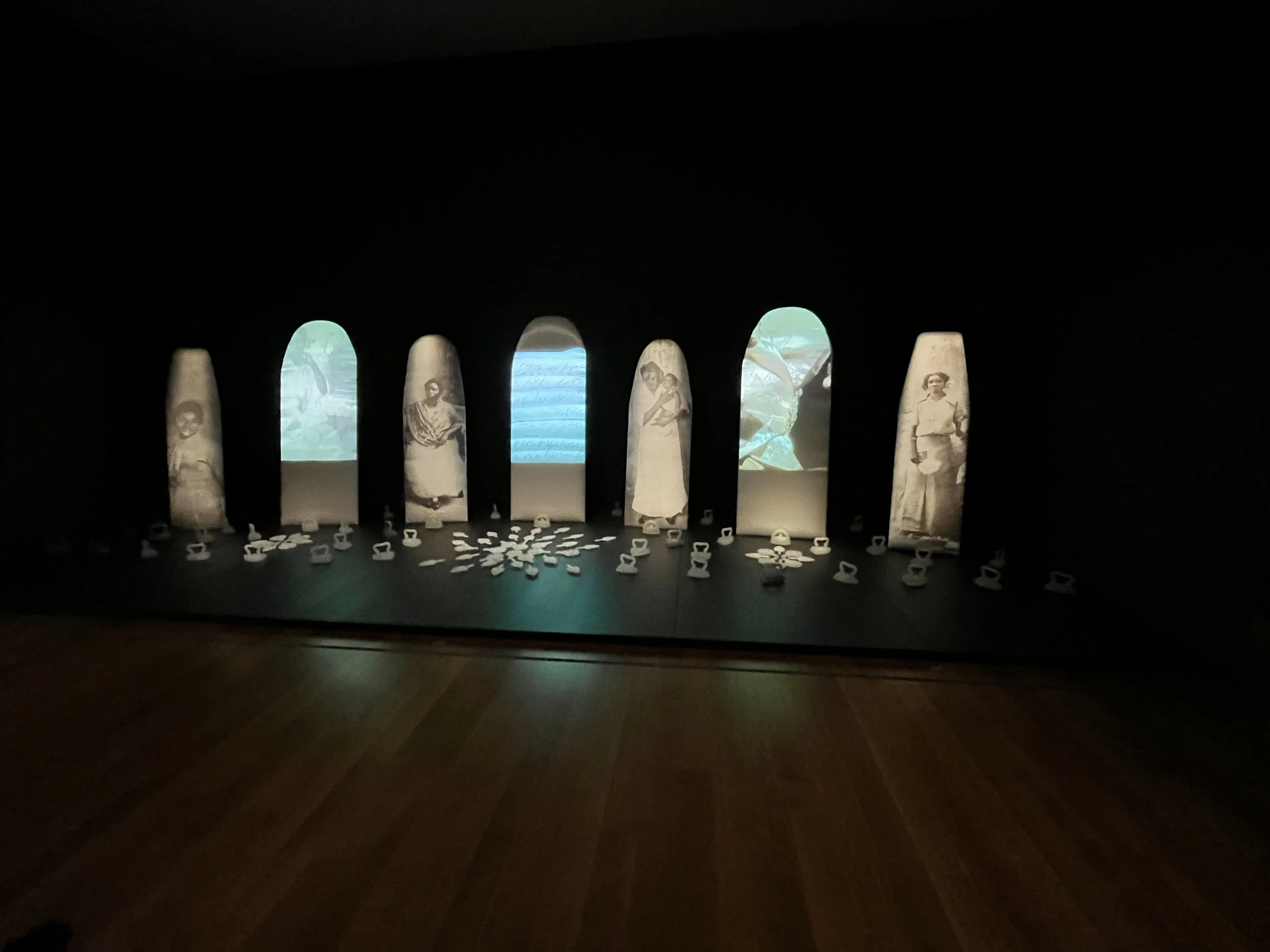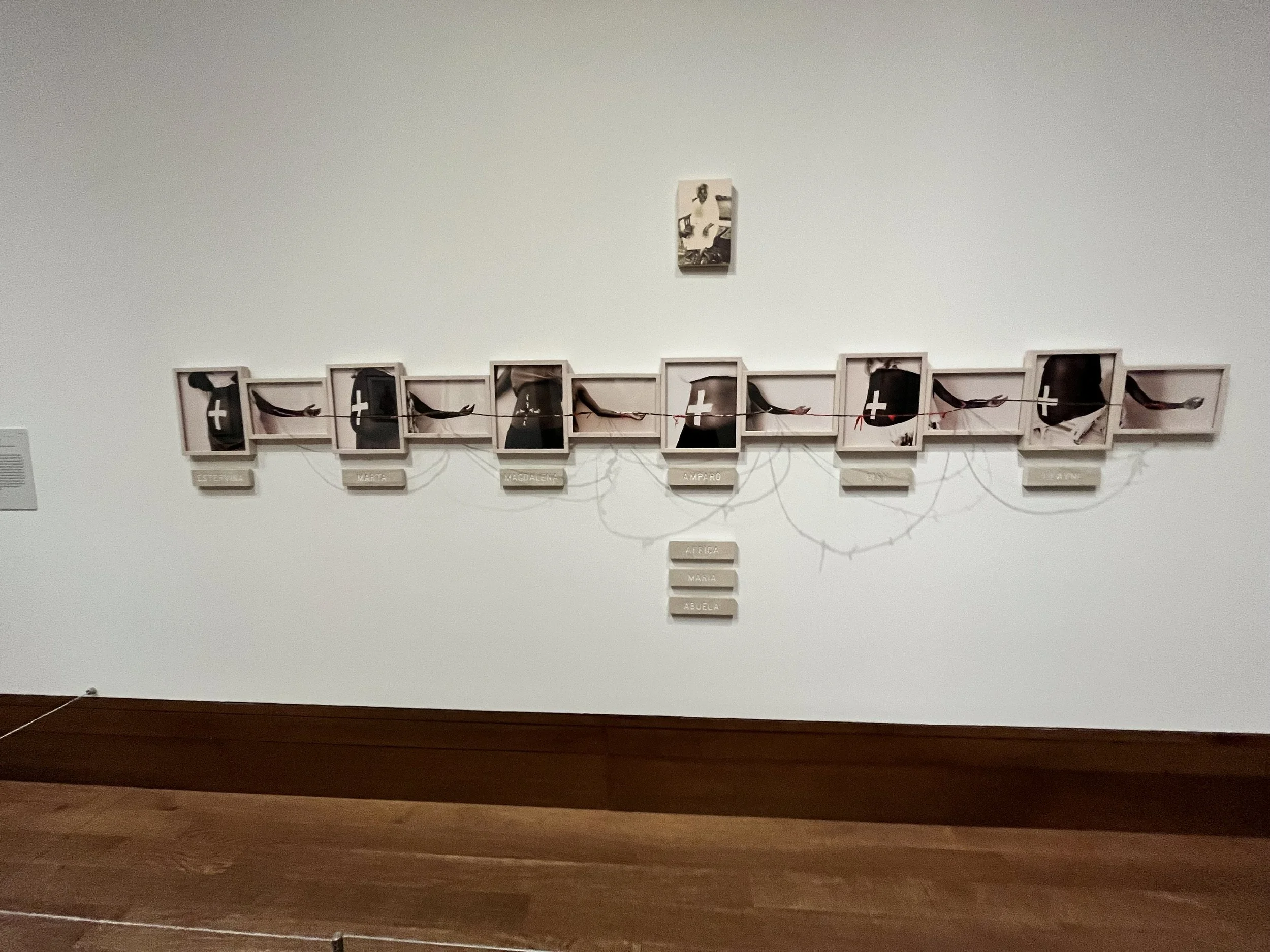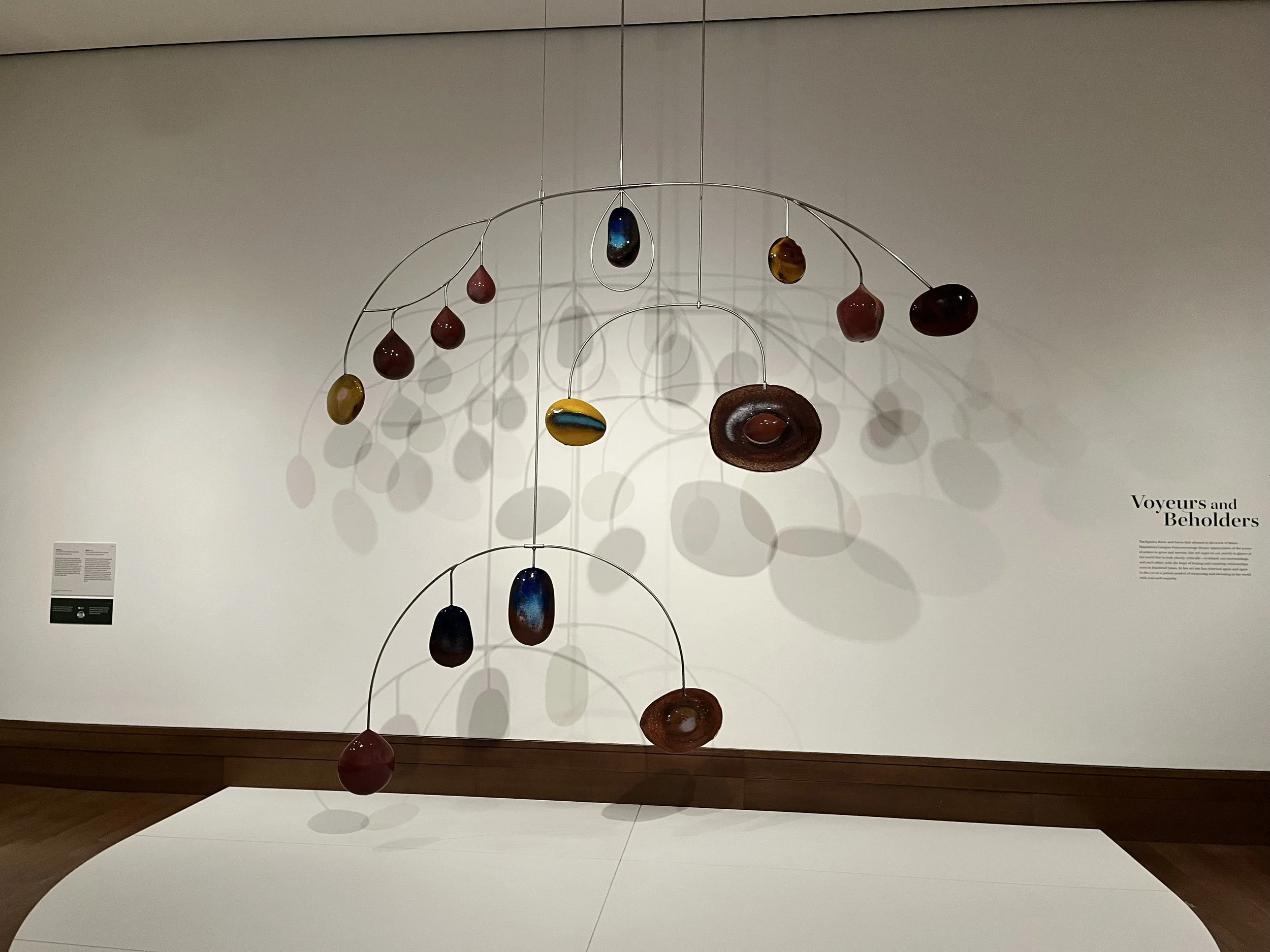Artists We Love - Special Edition: Maria Magdalena Campos-Pons
The Calling
2003
Diptych of Polaroid Polacolor Pro photographs
Today I am writing to you to share one of my favorite artists: Maria Magdalena Campos-Pons, affectionately known to her friends as “Magda”. What I love about Magda’s work is her consistent and ever expanding commitment to telling her truth. The truth of her identity. The truth of the world as she sees it. In these times (in the shadow of the first 100 days of Trump’s current term), it’s especially important to honor those artists who refuse to apologize for either the beauty or tragedy of their truth…even in the face of powerful forces seeking to erase it and silence us.
Magda’s truth is, like that of all of us who actively choose to examine it, complicated. Nuanced. It is never one thing. This is where the truth of Intersectionality comes into play. In the case of Campos Pons, this is the intersection of her identities as woman, descendant of an African slave, Chinese indentured labor and a Santeria priestess. She is Cuban, rural, migrant. In her art, all of the ways this affects her play out in the symbolism of Connectivity. The connectivity to Africa, to her family. To the universal gathering of women. And by extension, to the universal themes of migration/movement, the feminine body, spirituality and change. Magda’s art often incorporates self-portrait – her skin painted with the cascarilla of her grandmother priestess – to express the inseparability of race, class, gender and sexuality. A sacred, ritual substance made from powdered eggshells sometimes mixed with holy water and herbs, cascarilla is used for spiritual protection, purification and blessing in Regla de Ocha (Santeria), a spiritual practice itself at the intersection of christianity and the African orishas, including her personal twin guardians, Oshun and Yemaya.
In her work we also see the repeated use of materials, including lengths of rope-like hair locks (representing her blackness), brightly colored yarn and tree roots to express the connection between the longing and joy associated with home. The connection between Africa-China-Cuba, her migration to Tennessee and then Boston in conjunction to the transatlantic slave trade. The symbols of slavery itself – her use of birdcages and the elaborate swirls and curving decorative surfaces in colonial era wrought iron fences – creating tension when they block out the connection to the home, to earth. The organic twists of her hair, the fibers of yarn (a material/product of domestic labor) and plant roots standing in for the shiploads of black African bodies forcibly removed from their mother/home.
The Flag 13. Color Code Venice
2013
Composition of nine Polaroid Polacolor Pro Photographs
Her feminine truth is of course inseparable from her entire body of work. It expresses in one of her most famous works, Spoken Softly with Mama (1998), a multi-media installation where a circle of delicately rendered white glass irons and ironing trivets are spread in front of five ironing boards covered in white silk. Onto the silk she projects rotating videos depicting vintage and contemporary images of her matrilineal family – enslaved grandmother, mother, sisters, herself – with images representing the labor they were forced to produce as slaves and the domestic duties of women post-slavery.
Spoken Softy with Mama
1998
Embroidered silk and organza with photographic transfers, ironing boards, embroidered cotton sheets, glass irons, and trivets; three-channel videos (color, stereo sound); and four-channel non-repeating electroacoustic composition
The female body exposes issues of all that is the sacred-feminine. Family, birth, death, nurture. In Umbilical Cord (1991), six wooden frames the matching the color of the tintypes they frame hold close ups of the baby-carrying sections of her mother, sisters and herself. The six photographs form a literal cross with their grandmother ancestor and the marble plaques engraved with each of their names. An extended arm suggests their familial connection as each one’s arm opens and is held out to her daughter/sister. All six of their bellies bear white cascarilla crosses.
Umbilical Cord
1991
Marble, carved wood, wire, fabric, soil, and color prints
In other work, the artist exposes the ways in which women, particularly black women, are forced to experience violence – both as witness and victim. In The Right Protection (1999), a rear view of her naked body is entirely painted with wide-opened brown eyes against a white backdrop covered with more brown eyes, not quite out of view.
The Right Protection
1999
Polaroid Polacolor Pro Photograph
Themes of migration, the African diaspora and dislocation are also central to Magda’s work. In The Warrior Reservoir - Ocean (2022), which serves as the image accompanying the title of the current Getty Center exhibition, the blue of the ocean, seen as a thin horizontal line dissecting two enormous canvases, connects two seated women at the edges of the diptych. They are winding a ribbon of ocean onto a spool, as though it is yarn. One woman is covered with white cascarilla (a santeria priestess?) and separated by the vast whiteness of the canvas, the other woman gathers the ocean at the other end, her ocean blue tears signifying the great sadness and longing attached to her distant home.
Butterfly for Eyes
2021
Tryptic of inkjet prints, watercolor, ink, gouache, and gum arabic
Yet, in spite of the many challenges and limitations she points to as part of the economic and social inequity endured by black women, the dispossession from African soil, the ongoing violence of structural racism, Magda’s work is ultimately joyous, forward looking, hopeful. Love adapts, transforms and survives. Her monumental handblown Murano glass Mobile #3 was created in the aftermath of the murder of Breonna Taylor. Along with Butterfly Eyes, in which three panels – two photographs flanking a watercolor and gouache painted central image of vibrant colored flowers, their bee-attractive centers enhanced — she celebrates the spirit of the martyr’s eyes (and all our departed ancestors) in her 2021 series, the Rise of the Butterflies. They are the ultimate homage to the enduring, borderless, unlimited and universal power of Love.
Mobile #3
2021, from series The Rise of the Butterflies
Murano glass and stainless steel

